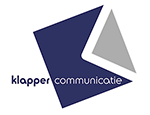In March in the UK a new tv-program started about people who have to deal with a limited budget. Money-saving formats increased last 2 years, especially in the UK and USA, and striking is that in most program titles savers are indicated as ‘super’ or ‘extreme’.
Since March 25th Channel4 at daytime airs Superscrimpers’ Challenge with money-saving-tips that are both given by viewers and host Mrs. MoneyPenny. Beside the tips 3 budget-challenges are part of the program, e.g. prepare a family-dinner for 6 with a budget of 10 Pounds, or create a different look for 25 Pounds including a new haircut. This challenge program is a spin-off of the original Super Scrimpers (C4) transmitted for 2 years now. It’s a creative format, an eye-opener with a happy feel and look.
One of the newest money-saving formats in the USA is Super Saver Showdown that is broadcast on Oprah Winfrey’s Network OWN started in August 2012. It’s a reality competition between two (obsessed) bargain hunters and their family. The two families have to organize a big party for someone special with a budget of 100 Dollar for the food (spending in just 20 minutes) and 100 Dollar for party styling (within 2 days with a lot of DIY). The contestants use skills like clipping coupons, super saving and DIY-designing. The winner gets a cash prize of 10.000 dollars. Super Saver Showdown is a mix of elements from other tv-programs: Extreme Couponing (TLC), 48 Hours Wedding (PAX) and Shop ‘til you drop (LifeTime).
The money-saving trend started in the USA in 2009 with Extreme Couponing (TLC) about American housewives who collect coupons and see it as their work. Hilarious is to watch how they clip all these coupons and how they create huge stocks of food at home. In the supermarket they want 3 shopping carts full with products paid with the coupons. The cash register indicates 600 Dollar, but the housewife returns the coupons (one by one) and the total amount drops to 0 Dollar. That’s the challenge: extreme shopping without paying a dollar.
TLC launched the follow-up Extreme Cheapskaters in October 2012. Each episode gives a glimpse at persons who don’t want to spend their money if it isn’t necessary. Some cheapskaters aren’t poor at all but don’t like spending money, others live from what others throw away trying to educate wasteful people, and a third group try to save the planet by using less electricity and second hand furniture. Examples of cheapskaters strategies for dinner are ’self-picked salads’ from nature, ‘dumpster diving’ to find packaged food in garbage trucks, and ‘hunting road kills’ to find dead birds and rabbit along the highway. This program can be called: extreme creative.
The described tv-formats translate the recession message of savings and budget cuts to amusing television in which creative skills are needed. Super.
Agnes Dijker
